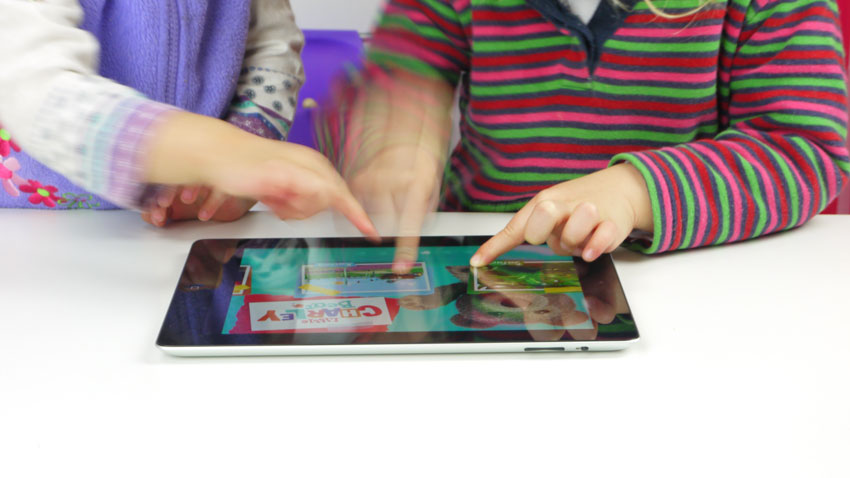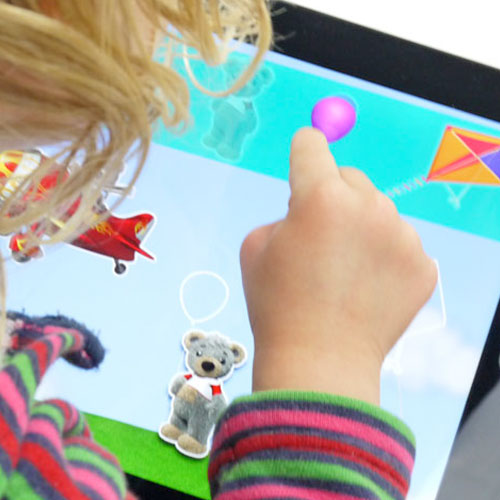Technology is hard to say ‘No’ to
I just read that Pink won’t let her 10-year-old daughter get a mobile phone, despite the fact that most of her peers have one. Go Pink – I applaud you on your conviction! My husband and I have experienced the constant pestering of my own 11-year-old daughter for a phone. We only recently relented and got her one because she started high school and for the first time is walking to school alone. We are still saying no to TikTok, SnapChat and all the other social media that many primary school aged children use now.
That’s the thing with technology, it’s difficult to completely ban it, especially when it’s such an integral part of our modern lives and as parents we use it ourselves. But what is important is setting boundaries and limits for our children.
Why should screen time for young children be limited?
The more exposure young children have to screens, the more they want – just like adults. I most certainly have spent way too much time scrolling through Instagram and Facebook. Digital technology is addictive.
Behavioural research has shown that the more time young children spend with screens, the more they watch later on, and the more difficulty they have turning off screens as they become older.
UK psychologist Dr Aric Sigman believes that a generation of children is developing a lifelong habit and in some cases dependency on small screens because of over-exposure in childhood.
”Digital natives, those familiar with computers and the internet from an early age, have a higher prevalence of screen-related ‘addictive’ behaviour that reflects impaired reward-processing and impulse-control brain mechanisms.”
(Sigman 2014, 2017)
Sigman’s findings are relatable, as I have most certainly noticed changes in my children’s behaviour after a longer screen time session. They become more irritable, moody and sensitive.
What are the health risks associated with screen time?
Besides behavioural effects, there is also evidence that suggests extensive screen time is linked to problems for children including childhood obesity, sleep disturbance, visual issues, motor development and social wellbeing.
Screen media exposure is one of the best-documented causes of obesity in children. The reasons for this vary from screen time replacing physical activity to the impact of advertising to sleep reduction.
Sleep can be adversely affected by screens. Exposure to blue-light emitting devices should be avoided for at least an hour before bed as they can interfere with the body’s circadian rhythms. What’s more, content consumed on screens can stimulate children’s emotions (ie. scary, dramatic or exciting) which leads to greater sleep disturbance.
According to a study in BMC Ophthalmology there has been a worldwide increase in myopia or nearsightedness. They attributed this to children spending more time doing close-up activities such as interacting with screens rather than spending time outdoors. Other symptoms from looking at screens too much include eye strain, headaches and blurred vision.
Fine motor skills can also be adversely affected by screen time. A 2019 study determined that a higher amount of screen time was related to lower fine motor skills (small muscle co-ordination) in young children.
Not only that but screen time reduces time for social interaction. Instead of engaging in imaginative play or conversations with others (activities which develop young children’s social skills) children are spending increasing amounts of time engrossed in screens.
With all this in mind, screens also have benefits. A study published late last year in PlosOne, concluded that increased screen time is unlikely to be directly harmful to 9-and-10-year-old children. In fact, they discovered positive outcomes such as stronger peer relationships. Social media and online gaming provide opportunities for children to find and interact with like-minded friends. Furthermore, screens can deliver educational content and be used as tools for creativity.
The research about the effects of screen time on young children is hardly conclusive. However, most health authorities in different countries do agree on the amount of screen time young children should be exposed to.
How much screen time should I give my child?
Current national and international screen time guidelines recommend no screen time for children younger than two years and no more than one hour per day for children aged 2-5 years.

This may seem a rather rigid rule (and one I admittedly broke with my children at times) but the earlier you can embed healthy media habits the better. Instead of giving your child your phone when you are out shopping, why not play some music or songs for them to bop along/listen to (just make sure when using headphones/earphones the volume set low for their sensitive ears). If you have a baby/toddler the fun songs and rhymes in The Bubble Box – my online music program for babies are sure to keep them entertained.
Providing a balance between screen time and active play
The main drawback of screen time is that it takes away from other activities known to be more beneficial to children’s growth and development. Here are some tips for striking a healthy balance:
- Make time for play with your child. Engage in activities such as hands-on creative play, music time, physically active play, time in nature and interactions with other children and adults.
- If you’re busy try not to resort to handing your child a screen so that they are occupied. Offer them alternative activities or let them be bored. Learning to accept boredom is an important life lesson and can often lead to finding more enjoyment in activities like reading, playing games, exploring and using their imagination. A delightful book to read with your child about this topic is Eva’s Imagination by Wendy Shurety.
- Don’t use screens during a meal.
- Discourage screen use in the car.
- Plan family fun nights.
- Model good screen habits.
It is clear that the best thing we parents can do is to use our judgement to strike a balance for our families. As long as children are spending plenty of time engaged in other types of play, then there is a place for technology. After all, we live in a digital world.


0 Comments